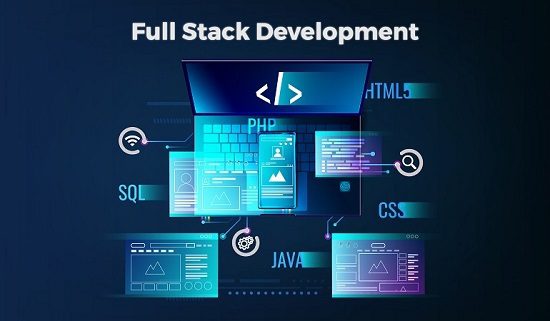Full-stack development is quite the rage and buzzword nowadays because of the inclination toward coding and development practices. The job of a full stack developer is quite desirable for the same reason too in the industry for the latest and hottest IT jobs. This profession pays handsome salaries and offers lucrative growth potential and learning curves. Full-stack development is a multi-faceted field and a holistic engineering practice that covers all facets, aspects, and angles of web development. Are you interested in the world of coding and IT? You have landed at the right place where you can learn about full-stack development and why it is so in demand. We will first understand the web development part and then review the responsibilities of a full-stack developer.
Full-stack development is one of the most sought-after IT resources these days. They understand all the aspects of a software development lifecycle (SDLC), including the front-end and back-end development of applications.
The popularity of full-stack developers is primarily due to the fact that they remove the need for you to hire extra resources, thus saving money. You can develop good software without requiring more resources for the development process.
This article explains all the things you need to know about full-stack development – the necessary technical and soft skills, tech stacks, database technologies, DevOps, etc.
What is Full Stack Development?
It comprises different development processes for a software application and covers two major categories, including front-end and back-end development. For those who do not know,
Front-end development involves the development of the client’s or customer’s side of the application. It is the front face of the application, which appears in front of the users in the end product. It mostly deals with visuals and appearance. Front-end also deals with user interface, and developers try to make it user-friendly and interactive for smooth working.
Back-end development refers to the server-side or back-end of the application, which is not visible to us but involves programming language and coding. It is the part that is responsible for showing us the front end of the application and includes information exchange between browsers and the back-end database.
In short, full stack development discusses the front and back-end development of a website, software, or application. People are often confused with the words full stack. A full stack or software stack includes a combination of different components of a software application. These components work simultaneously in harmony to ensure the smooth execution of the application. It involves software products, patches, coding languages, frameworks, servers, operating systems, tools, business logic, application workflows, and different databases. The purpose of full-stack is to encourage user interaction, facilitate application usage, run calculations, and power back-end tasks.
What Are The Benefits of Full-Stack Development?
Full-stack development offers a wide range of benefits, including the following:
- It offers complete ownership, charge, technological development, and understanding of the project/application
- Works as a productivity and performance booster
- Tends to save tremendous cost and project time if carried out by a professional developer
- Allows quick and speedy recovery and bug-fixing of the system in the event of a technical glitch
- Ensures organized and better assortment of work due to individual components and workflows
Who Is a Full Stack Developer?
Now we shall see who is a full-stack developer. A full-stack developer is not your average engineer or developer with web development capabilities. These people are certified engineers that have skills in front and back-end workflows and technologies. They possess a great understanding and experience in web architecture. Being certified professionals, they have a theoretical and working knowledge of front and back-end frameworks, databases, business logic, servers, APIs, and different technologies. They can single-handedly offer consulting services on web development and implement both front and back-end workflows effortlessly.
What Are The Core Responsibilities of a Full-Stack Developer?
Following are the different duties and responsibilities of a full-stack developer.
- Getting hold of customer needs and procuring project technological requirements from the associated stakeholders
- Assessing and evaluating project needs and devising solutions for them
- Designing and developing user relations
- Creating, managing, and modifying databases and servers
- Bug testing in codes and business logic for identifying threats and system vulnerabilities
- Modifying and rectifying codes with the help of hardware and software
- Exercising methodical testing procedures as problem-solving mechanisms
- Optimizing applications for cross-platform usage
What Are The Different Languages Used in Full-Stack Development?
Full-stack development is not bound by standardized language usage. In fact, it is supported by a wide variety of languages that are compatible with the system and each other. One of the commonly used full-stack languages is JavaScript. It is so versatile and universally applicable that it can be used in front and back-end development. Other popular languages for the front end are HTML, CSS, and JavaScript. Back-end languages include Python, Java, R, Ruby, Node.js, and PHP.
Conclusion
Full-stack development is now an effective development approach within the application development industry. These developers are highly skilled and thus in great demand.
We hope this article will help you understand all the salient features of full-stack development and why you should prefer it over other options.
If you need a full-stack developer to join your team (temporarily or permanently), contact us at info@localhost. We have highly qualified and experienced full-stack developers working with us, serving our clients from startups to Fortune 500 companies.
































